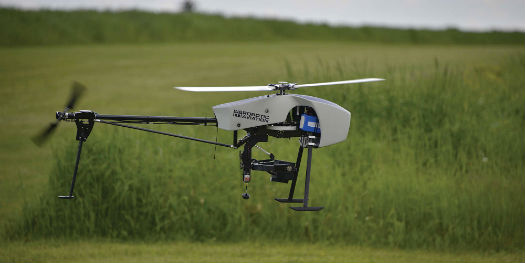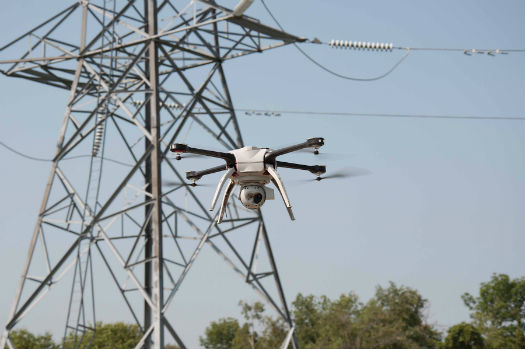The market for unmanned aircraft has grown tremendously in recent years—and so have the product offerings.
In November 2014, Transport Canada issued two exemptions to facilitate wider use of small unmanned air vehicles (UAVs) weighing 25 kilograms or less, describing the action as an “interim strategy” meant “to accommodate the industry’s exponential growth.” Now, the agency is taking steps to formalize its rules for small UAVs, with the goal of introducing regulatory requirements in 2016.
In a Notice of Proposed Amendment (NPA) issued on May 28, 2015, Transport Canada outlines its plans to regulate small (25 kilograms or less) UAVs that are operated within visual line-of-sight. The intent, according to the NPA, is to develop a regulatory framework that is “risk-based, flexible, and consistent with international partners”—one that encourages innovation within this emerging industry sector, while also minimizing risk to manned aircraft and the general public.
Currently, Canadian regulations distinguish between model aircraft, which are flown for “recreational purposes,” and UAVs, which are unmanned aircraft “other than a model aircraft.” For a number of years, Transport Canada has permitted commercial operations of UAVs through the issuance of Special Flight Operations Certificates (SFOCs), which are granted on a case-by-case basis.
Canada’s flexible SFOC system has helped it become a world leader in commercial UAV operations—in notable contrast to the United States, where the Federal Aviation Administration (FAA) has only recently begun granting exemptions to commercial operators of UAVs (or unmanned aircraft systems/UAS, in the FAA’s preferred terminology). As the UAV industry has exploded, however, so have the number of SFOC applications. Transport Canada issued only 345 SFOCs in 2012, but 1,672 in 2014—an increase of 485 per cent in just two years.
The introduction of clear regulations for small UAV use should help the market expand even further in both Canada and the U.S.
The narrow exemptions that Transport Canada issued in November were intended to accommodate some of this demand by permitting certain low-risk UAV operations without SFOC approval. The exemptions—one for UAVs under two kilograms, and one for UAVs between two and 25 kilograms—require operators to remain at least five nautical miles from aerodromes and built-up areas, and comply with other general conditions.
Regulatory amendments would further ease the administrative burden associated with the SFOC system by establishing clear guidelines for a wider range of UAV operations. The NPA identifies three broad categories of small UAV operations, each of which would be associated with a different level of regulation. The most heavily regulated category would be “complex operations with small UAVs,” which would include operations in built-up areas and near aerodromes. Such operations would require, among other things, a pilot permit and a registered aircraft that meets a Transport Canada-specified design standard.
The NPA also specifies a “limited operations with small UAVs” category, which would accommodate operations away from built-up areas and aerodromes—many agricultural operations, for example. That category would also require aircraft to be registered and meet a design standard, but would not require a pilot permit. Operators would, however, be required to demonstrate specific aeronautical knowledge, possibly through completion of an online self-study program.
Finally, Transport Canada is considering an “operations with very small UAVs” category, which would have the least burdensome requirements, although operators would still need to satisfy an aeronautical knowledge requirement. The agency is seeking comments on whether such a category should be created and, if so, whether “very small UAVs” should be classified by weight or some other criteria, such as kinetic energy.
Whereas Transport Canada currently distinguishes between model aircraft and UAVs based on their intended use, its proposed amendments would address UAVs “used for any and all purposes.” However, the agency does intend to provide a “carve-out” for model aircraft enthusiasts operating within established aeromodelling organizations that have a proven safety record. The agency will also preserve its SFOC process for higher-risk UAV operations, such as those involving larger UAVs or aircraft operated beyond visual line-of-sight (BVLOS).
Transport Canada’s proposed amendments would address UAVs “used for any and all purposes.”
Aligning Standards
Transport Canada’s NPA follows closely on the heels of the FAA’s proposed rule for small UAS, which was issued on Feb. 23, 2015. The FAA received several thousand comments on its proposals before the comment period closed on April 24; the agency is now in the process of assessing that feedback for incorporation into a final rule.
According to Diana Cooper, head of the unmanned aerial systems and robotics practice group at LaBarge Weinstein LLP in Ottawa, Ont., much as the FAA’s proposed rule was informed by Canada’s approach to UAVs, “now it looks like the new Canadian regulation is drawing inspiration from the U.S. rule.” (Indeed, the NPA states explicitly, “Transport Canada intends to work with the FAA to align, to the extent practical, their respective regulatory frameworks to facilitate cross-border trade for the UAV industry.”)
“It’s definitely clear that the regulations are going to become more restrictive in Canada,” Cooper told Skies, noting, for example, that the introduction of a design standard may prove to be a significant hurdle for some smaller UAV manufacturers. However, the NPA is relatively light on specifics, giving industry the opportunity to help shape the final regulatory amendments. Comments on the NPA will be accepted through Aug. 28, 2015.
In the meantime, Cooper said she’s encouraged to see that Transport Canada intends to continue granting SFOCs for more complex UAV operations. According to Cooper, the agency’s flexible, progressive approach to granting SFOCs has helped the commercial UAV industry grow while simultaneously promoting safe, professional behaviour. First-time applicants typically receive very narrow SFOC approval, but “if you show a good, safe track record you’re able to get broader exemptions that allow you to operate over a larger geographic area for a longer period of time,” she said. “That’s how the system rewards safe operators.”
Canada has long outpaced its southern neighbour in permitting commercial UAV operations. However, the FAA is finally taking steps to catch up, and has now granted more than 500 exemptions for commercial UAS operations under Section 333 of the FAA Modernization and Reform Act of 2012. A significant milestone came on May 1, 2015, when the FAA granted approval to Yamaha Motor Corporation to conduct agricultural operations with its remotely piloted RMAX helicopter—marking the agency’s first UAS exemption for crop spraying. With a length of nine feet and an empty weight of around 141 pounds (64 kilograms), the RMAX is also larger and heavier than UAS previously approved to operate under a Section 333 exemption.
Also in May, at the Association for Unmanned Vehicle Systems International (AUVSI) trade show in Atlanta, Ga., the FAA announced its next move toward broader UAS integration: an industry partnership called “Pathfinder.” Through it, the FAA will work with the news channel CNN, the UAS manufacturer PrecisionHawk, and BNSF Railway to research some of the more challenging uses of UAS, including BVLOS operations and operations over populated areas, both of which are excluded from its proposed rule for small UAS.
“The framework of the rule that we published early in the year is very focused on line-of-sight operations,” explained FAA administrator Michael Huerta at a press conference announcing the Pathfinder program. “So, now we’re taking it to the next step. . . . Let’s start to explore this beyond-line-of-sight question for particular uses. What can we learn about that, what are things that represent reasonable applications of that, and what mitigations for safety do we need to put in place there?”
The Association for Unmanned Vehicle Systems International trade show in Atlanta, Ga., earlier this year attracted nearly 600 exhibitors and 8,000 attendees— reflecting the dynamism of this growing market. Mike Reyno Photo
Huerta predicted that the Pathfinder trials will yield “valuable data” that could result in FAA-approved operations in coming years—with benefits accruing to the entire UAS industry, not just the program’s partners. That point was reiterated at the press conference by CNN senior vice president, legal David Vigilante, who said, “It’s our belief that really the only way that CNN wins is if everybody wins, because we need to have an entire network of independent journalists that we can tap into, and not just own all of [the aircraft] ourselves. . . . What we really want is for a whole industry to come into place that we can tap into and be a part of.”
That’s something that many people on both sides of the border are looking forward to. Dave Proulx, vice president of product and marketing for the Waterloo, Ont.-based UAS manufacturer Aeryon Labs, described the FAA’s overall objectives for UAS integration as “really positive,” even though he said “there’s still some work to be done.” At the AUVSI trade show, Aeryon announced that the U.S. power utility Southern Company had received an FAA Section 333 exemption to use the Aeryon SkyRanger for power line inspections—just one of many potential applications for the company’s products in the States. “For [UAS], as with probably just about any technology, the U.S. represents a huge market opportunity,” he told Skies.
And demand for unmanned aircraft appears to be growing as rapidly as the technology itself is advancing. Proulx said that Aeryon invested considerably in its presence at AUVSI this year, and was “really pleased to see an extraordinary amount of high-quality traffic” at the show, particularly in the form of savvy prospective end users. “I think in general the market has tremendous momentum right now,” he said.
Elan Head is an FAA Gold Seal flight instructor with helicopter and instrument helicopter ratings. She holds commercial helicopter licenses in the U.S., Canada and Australia, and is also an award-winning journalist who has written for a diverse array of magazines and newspapers since the late-1990s. She can be reached at elan@mhmpub.com.







